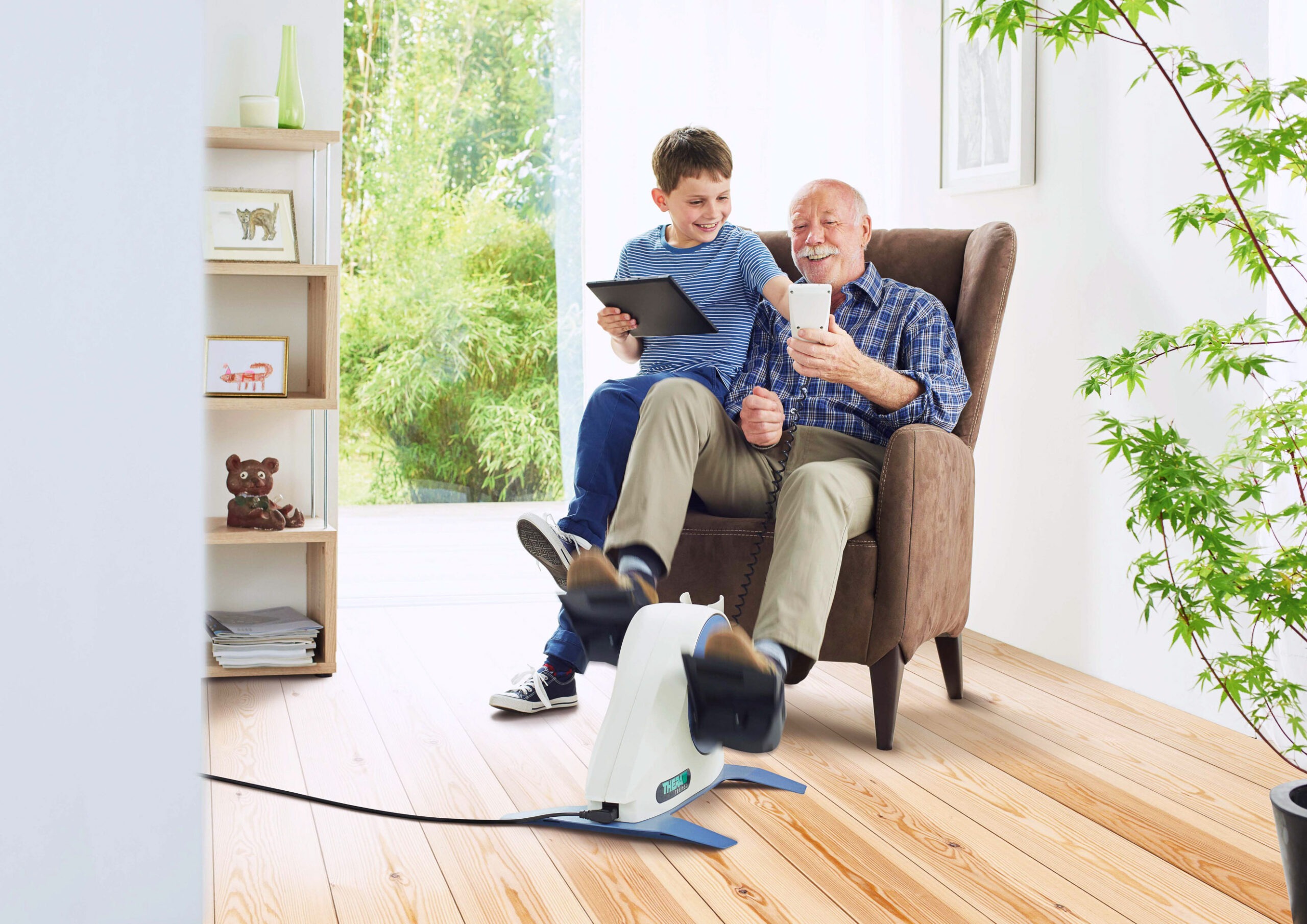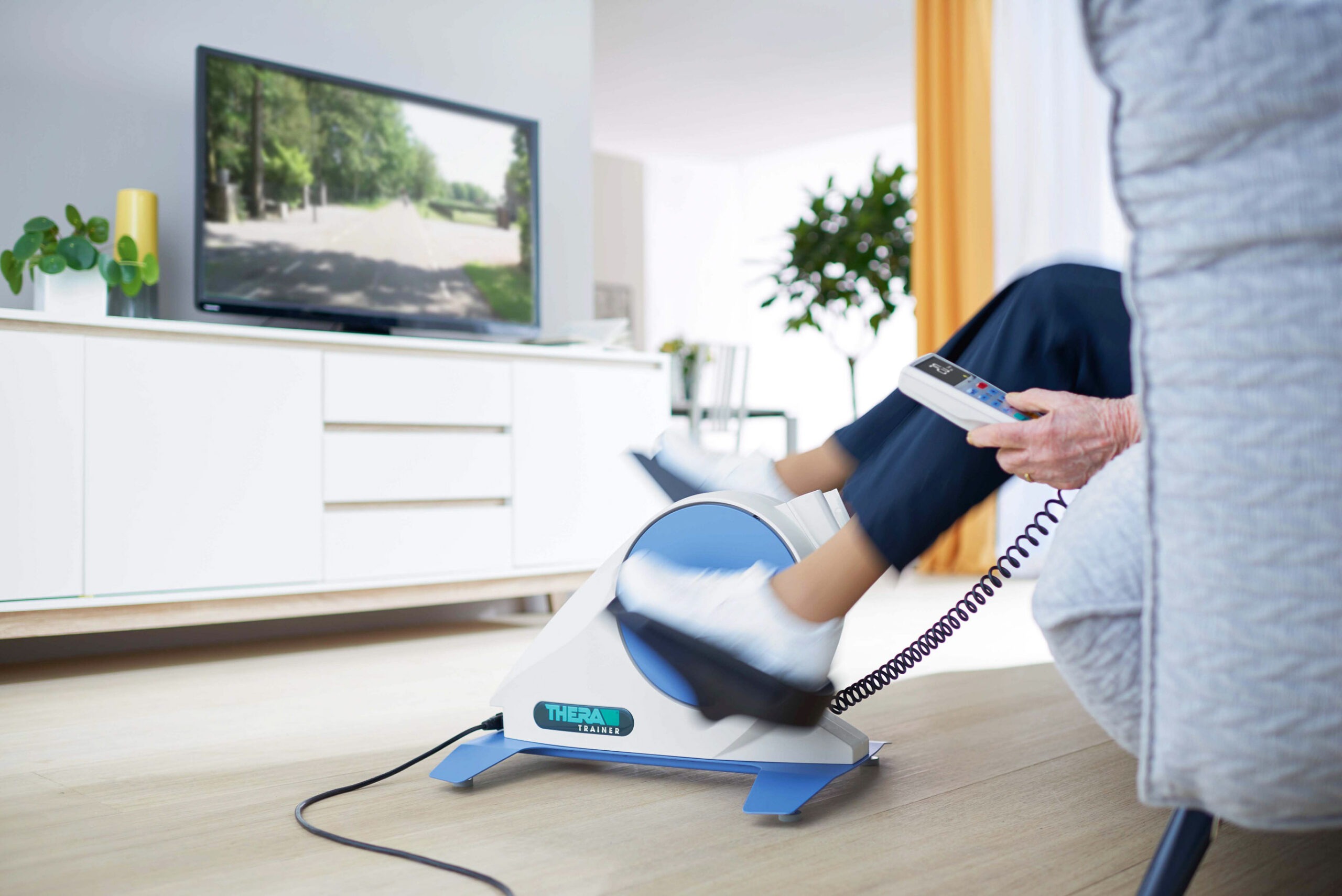
Science
Shifting the boundaries
How active movement with the THERA-Trainer extends body awareness – new insights into the dynamics of our peripersonal space

Jakob Tiebel
Health Business Consultant
How close does something need to get before we react? This deceptively simple question relates to a highly complex area of human perception – our peripersonal space (PPS). This space immediately surrounding our body plays a vital role in how we interact with the world – and, as a new study reveals, it can be specifically shaped through movement. What’s particularly exciting is that the researchers used the THERA-Trainer mobi as a rehabilitation training device to investigate this phenomenon.
The study: cycling in virtual reality
A Japanese research team led by Naoki Kuroda used the THERA-Trainer mobi in combination with virtual reality. The participants sat on the therapy device, wore VR goggles and experienced a computer-generated forward movement in a virtual tunnel Meanwhile, their reaction to tactile stimuli on the upper body was measured.
Three conditions were tested:
Active pedalling: the participants pedalled themselves.
Passive pedalling: the THERA-Trainer moved the legs.
No movement: the participants sat still.
Three conditions were tested:
Active pedalling: the participants pedalled themselves.
Passive pedalling: the THERA-Trainer moved the legs.
No movement: the participants sat still.
The results: movement expands our perceptual space
The reaction times showed clearly that when people are actively moving, the boundaries of their peripersonal space expand. The visual approach of an object enhanced the perception of a tactile stimulus more strongly during active pedalling than in the control conditions. Even passive movement showed a certain effect – albeit less pronounced.
These results show that one’s own movement – and possibly the associated feeling of control (sense of agency) – influences our perception of our own body in space. The body seems to dynamically expand the space around it when moving actively through it.
These results show that one’s own movement – and possibly the associated feeling of control (sense of agency) – influences our perception of our own body in space. The body seems to dynamically expand the space around it when moving actively through it.
What does this mean for use of the THERA-Trainer?
These findings confirm what is frequently observed in neurological rehabilitation. Active mobilisation – even when seated and with support – can have profound effects on body awareness and thus on orientation and safety in space. The THERA-Trainer mobi is a valuable tool in this study for providing targeted movement stimuli that go beyond purely muscular effects.
Practical advantages:
Promoting body awareness: Particularly in patients with neurological impairments, the targeted use of the THERA-Trainer can help to improve spatial awareness and reaction capability.
Motivation through active engagement: The study shows that even minimal active movements (e.g. with low pedal resistance) can have positive effects – an important argument for their use in early rehabilitation phases.
Integration into virtual therapy approaches: In combination with VR, an innovative field of multisensory-based therapy emerges.
Motivation through active engagement: The study shows that even minimal active movements (e.g. with low pedal resistance) can have positive effects – an important argument for their use in early rehabilitation phases.
Integration into virtual therapy approaches: In combination with VR, an innovative field of multisensory-based therapy emerges.
The THERA-Trainer not only promotes mobility, but also activates core processes of spatial and self-perception.
Conclusion
More than just a training device for arms and legs, the THERA-Trainer mobi is an effective tool for improving body awareness and sensorimotor integration. Current research suggests that active movement – even when seated and with support – has a positive effect on core perceptual processes. The study reinforces the value of such devices in modern rehabilitation – and illustrates how targeted movement can sharpen the connection between body and surroundings.

Ambulante Rehabilitation
Cycling
Fachkreise
mobi
Patienten & Angehörige
Science
Stationäre Rehabilitation
THERAPY
THERAPY 2025-II
THERAPY Magazine
Training zu Hause
Wohnen im Alter & Langzeitpflege

Jakob Tiebel
Health Business Consultant
Jakob Tiebel is OT and studied applied psychology with a focus on health economics. He has clinical expertise from his previous therapeutic work in neurorehabilitation. He conducts research and publishes on the theory-practice transfer in neurorehabilitation and is the owner of an agency for digital health marketing.
References:
- Kuroda, N., Teramoto, W. Motor information contributes to visuotactile interaction in trunk-centered peripersonal space during a pedaling situation. Exp Brain Res 243, 25 (2025). https://doi.org/10.1007/s00221-024-06975-9 https://doi.org/10.1007/s00221-024-06975-9
You need to load content from reCAPTCHA to submit the form. Please note that doing so will share data with third-party providers.
More InformationYou are currently viewing a placeholder content from Turnstile. To access the actual content, click the button below. Please note that doing so will share data with third-party providers.
More Information